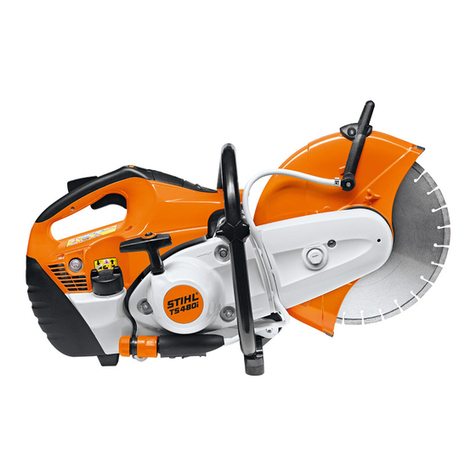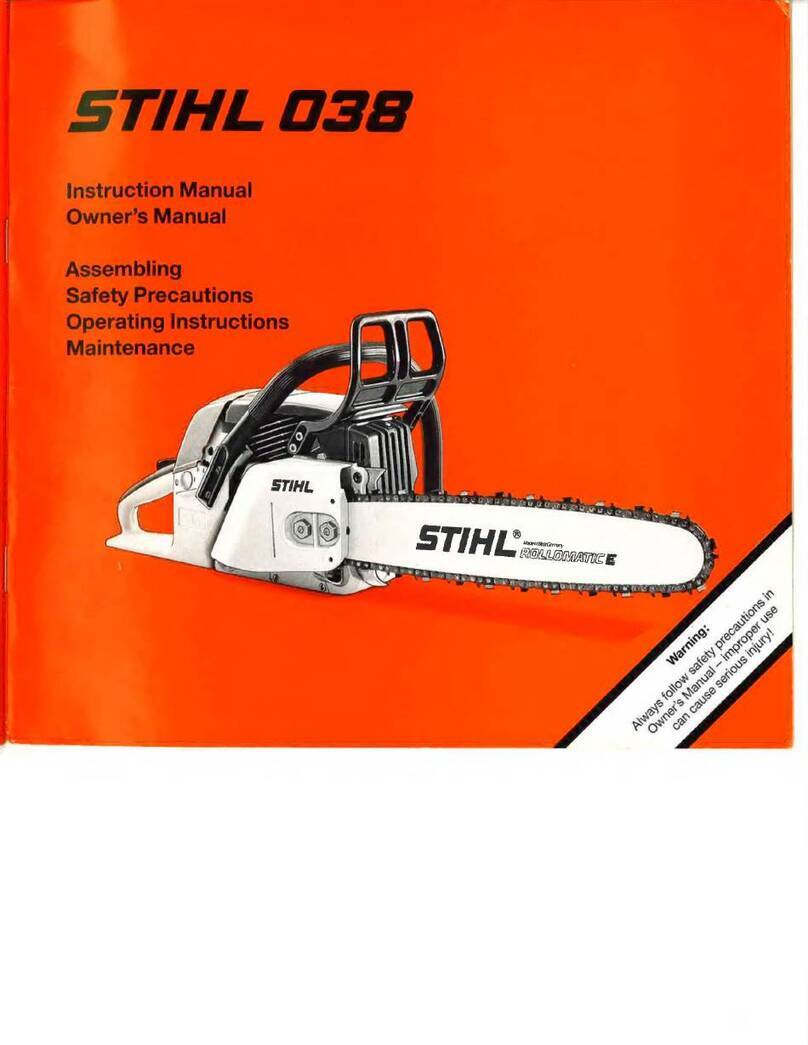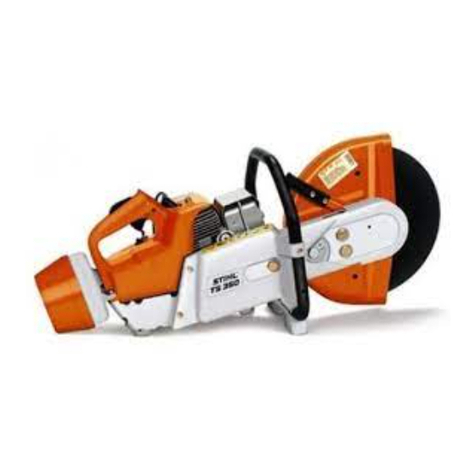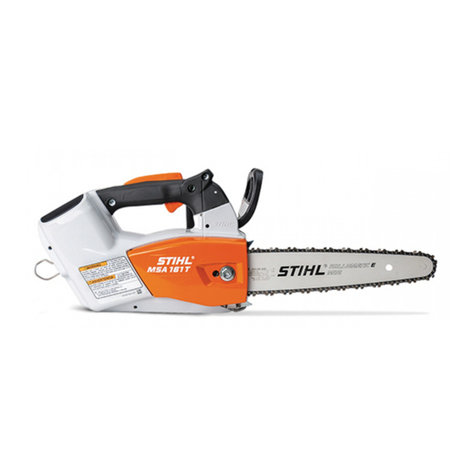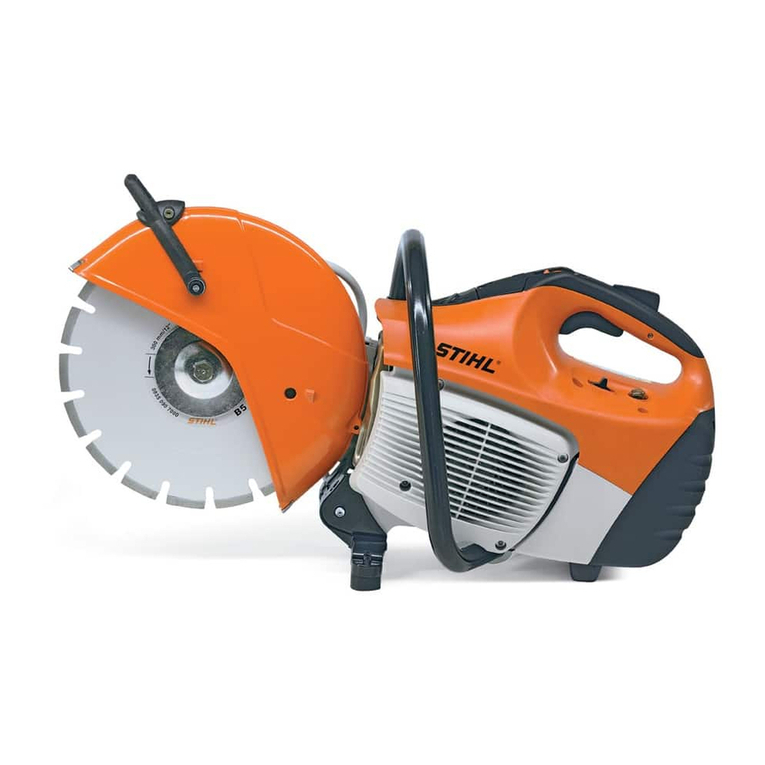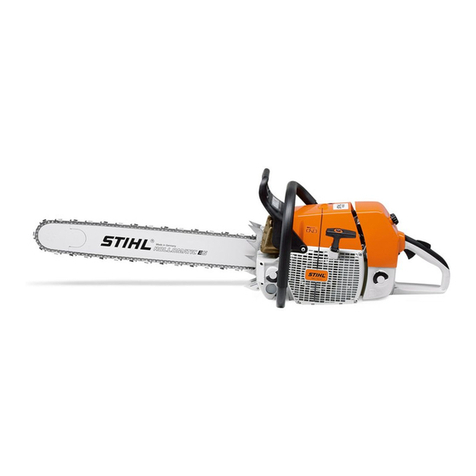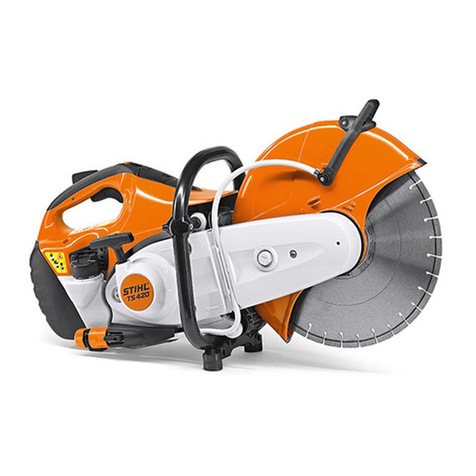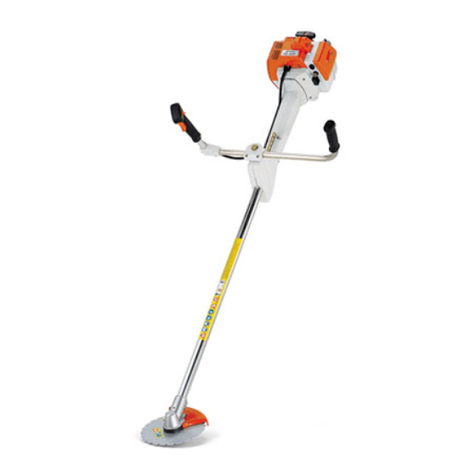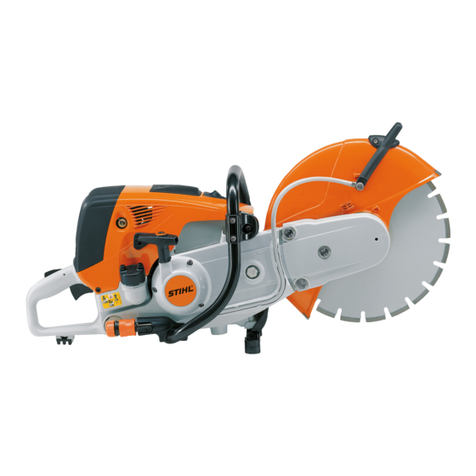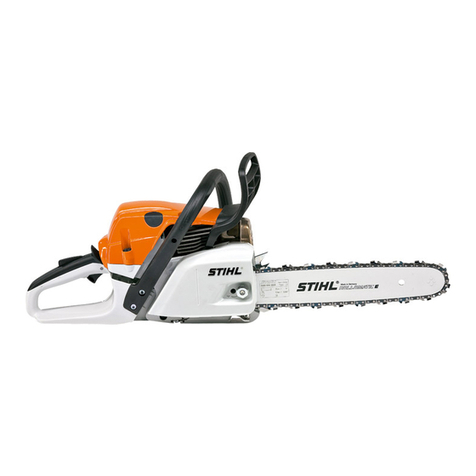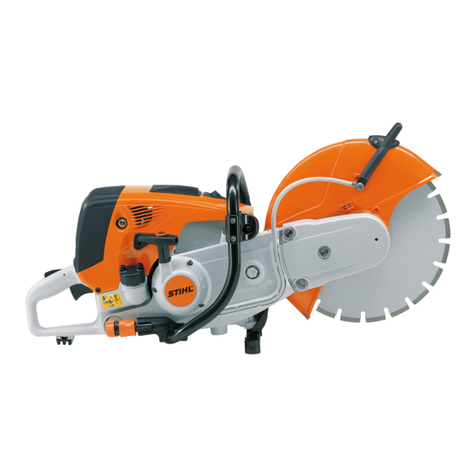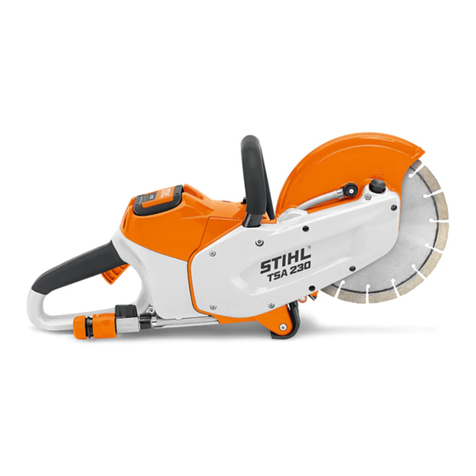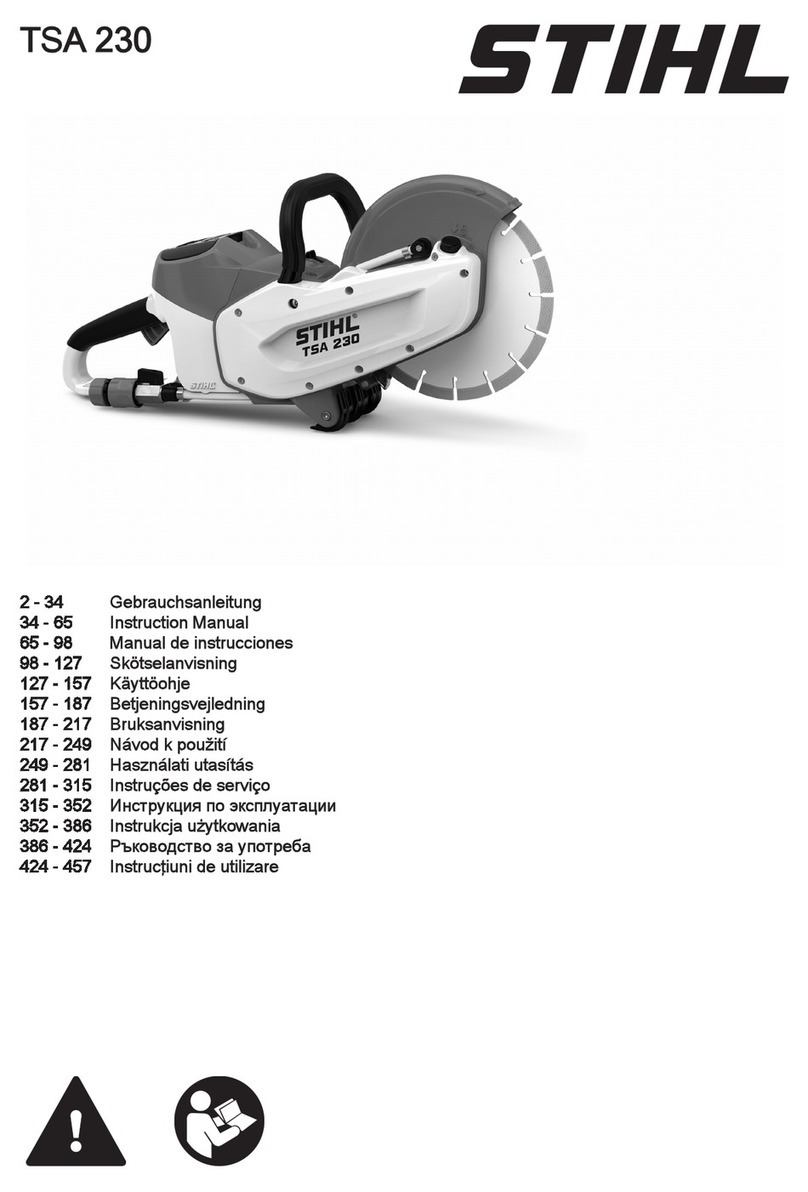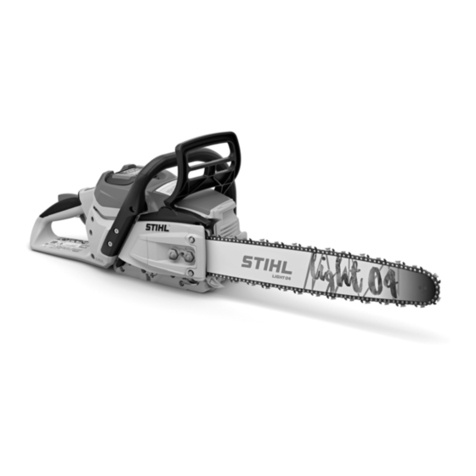Working safely with cut-off machines
English
8
the wheel. Never attempt to start the cut-
off machine when the abrasive wheel is
in a cut.
Once the engine has started,
immediately blip the throttle trigger,
which should release the starting throttle
lock and allow the engine to slow down
to idle.
Important Adjustments
At correct idle speed, the wheel should
not turn. For directions to adjust idle
speed, see the appropriate section of
your instruction manual.
Working Conditions
Operate the cut-off machine under good
visibility and daylight conditions only.
Wearing of hearing protection reduces
sound perception. Be alert not to miss
voice signals from co-workers. Keep
within calling distance to other persons
who may assist in case of emergency.
In this regard use good work practices
and follow the recommendations of the
manufacturer / supplier, OSHA / NIOSH,
and occupational and trade
associations. A water attachment kit is
provided with your cut-off machine and
should be used to reduce dust whenever
wet cutting is feasible. For dust
suppression purposes, the flow rate
should be at least 0.6 liters (20 fl.oz) of
water per minute. If wet cutting at the
recommended flow rate is not utilized,
the operator and any bystanders should
always wear a respirator approved by
NIOSH / MSHA for the material being
cut. See the section on "Respiratory
Protection" in the chapter "Sample
Applications" in the instruction manual.
Even if wet cutting at the recommended
flow rate, an operator who is actively
cutting for more than two hours in one
Warning!
When you pull the starter grip, do not
wrap the starter rope around your hand.
Do not allow the grip to snap back, but
guide the starter rope slowly back to
permit the rope to rewind properly. Fail-
ure to follow this procedure may result in
injuries to hand or fingers and may dam-
age the starter mechanism.
Warning!
Do not use a cut-off machine with incor-
rect idle speed adjustment. The rotating
wheel may cause injury. If you cannot
obtain the correct setting, have your
STIHL dealer check your cut-off
machine and make proper adjustments
or repairs.
Warning!
As soon as the engine is
running, this product gen-
erates toxic exhaust
fumes containing chemi-
cals, such as unburned
hydrocarbons (including
benzene) and carbon monoxide, that
are known to cause respiratory prob-
lems, cancer, birth defects, or other
reproductive harm. Some of the gases
(e.g. carbon monoxide) may be color-
less and odorless. To reduce the risk of
serious or fatal injury / illness from inhal-
ing toxic fumes, never run the machine
indoors or in poorly ventilated locations.
Ensure proper ventilation when working
in trenches or other confined areas.
Warning!
Use of this product to cut masonry, con-
crete, metal and other materials can
generate dust and fumes containing
chemicals known to cause serious or
fatal injury or illness, such as respiratory
disease, cancer, birth defects or other
reproductive harm. If you are unfamiliar
with the risks associated with the partic-
ular material being cut, review the
material safety data sheet and / or con-
sult your employer, the material
manufacturer / supplier, governmental
agencies such as OSHA and NIOSH
and other sources on hazardous materi-
als. California and some other
authorities, for instance, have published
lists of substances known to cause can-
cer, reproductive toxicity, etc. Control
dust and fumes at the source where
possible.
